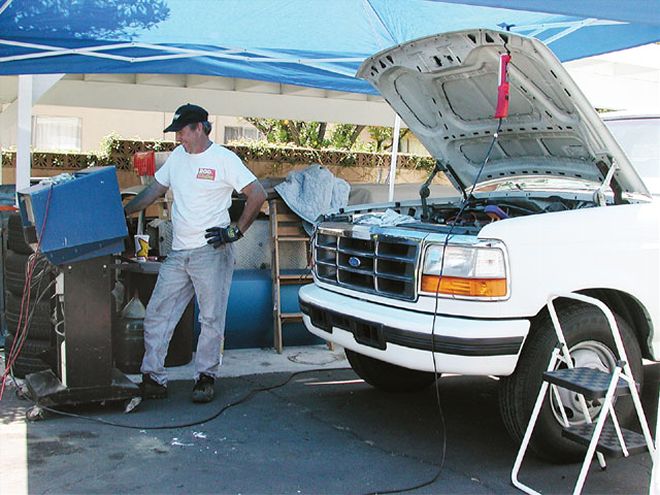

Tuning for all-out performance usually means not giving a hoot about fuel mileage and idle quality, and the only driveability issues anyone is ever concerned about is how well the engine reacts at wide-open throttle. That's great for the dragstrip, but your daily commuter requires almost the exact opposite consideration. For that bumper-to-bumper daily-grind traffic, it's often better to have a decent idle, no acceleration hiccups, and the ability to squeeze every last mile out of each gallon of gas. That's what we'll look at in this story.
First do the usual maintenance, such as replacing the spark plugs, the wires, and the cap and rotor. While most fuel-injected cars can adjust the ignition curve for peak performance, most noncomputer-controlled cars can usually benefit from some minor tweaking. Such was the case with our F-350 tow rig. No, we're not turning into Truck Craft, but our rig has been car crafted with a 460ci big-block stroked to 514 ci, a five-speed manual trans, and an Edelbrock Performer manifold and Performer-series 750-cfm carb.
Our tow truck hasn't seen a tune-up since we dropped the engine in-six years ago. We learned to live with its quirky cold-morning starts, random off-idle stumbles, and terrible gas mileage, but after a few years of this, it got old.
We spent the day with Editor Smith, intending to show how performing a simple tune-up and paying attention to the details might pay off with a better-running truck. We also employed his now-retired California smog sniffer to check the hydrocarbon (HC) levels. Our goal was to take the base readings, reduce the output, and increase the driveability of the unhappy big-block. It sounded like a tall order.
We were shocked to learn that the big-block's HC levels measured a relatively low 230 parts per million (ppm). By the end of the day, we lowered it to 140 ppm, which eliminated the off-idle stumble and improved the fuel mileage by an amazing 20 percent. Granted, we were only getting 10 mpg before, but the additional 2 mpg is a big improvement with a gas hog like this big-inch beast. Read on to see how we did it, and then go do the same to your own street machine.
Reading the SnifferHydrocarbons (parts per million)Before: 230 ppmAfter: 140 ppm
Carter AFB/Edelbrock Performer TipsAll carburetors work basically the same way, but AFB-style carbs use a different method of calibrating part-throttle fuel enrichment. The basic function of the metering rods is to perform like a Holley/Demon power valve by adding fuel when the load increases. These two primary metering rods have tapered ends that protrude into the main jets and increase fuel flow through the jet proportional to engine load. As load increases, a small spring underneath the metering-rod piston pushes the metering rod out of the jet, increasing the fuel flow. Best of all, part-throttle tuning changes can be done very quickly since you don't have to disassemble the carburetor.